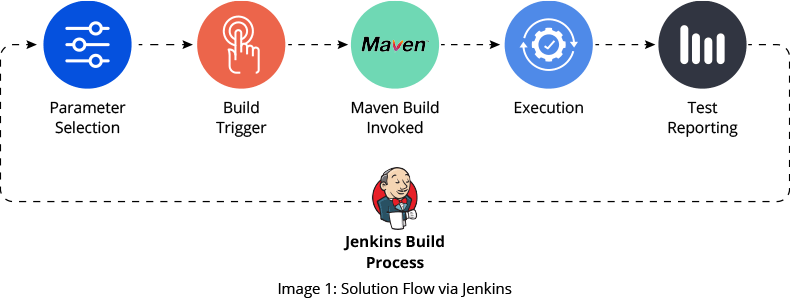After reviewing the company’s requirements, our Quality Engineering team suggested moving to Jenkins, an open-source automation server used to automate the various stages of the software development process, including building, testing, and deployment.
Our team built an intuitive parameterized pipeline using the ‘Jenkinsfile’ declarative syntax. We defined parameters for every possible execution combination of browsers, platforms, locations, test suites, and environments.
The company can now perform a ‘one-stop’ selection of required parameters and hit ‘Build’ to execute in the selected configuration. Email reports and logs are sent to Outlook, a Microsoft Teams channel, and Test Rail.
To address test data automation issues, our engineers liaised with the relevant teams to devise the solution. We significantly alleviated the problem by adjusting inventory for the selected products in downstream systems as part of the pipeline before triggering automation script.

Here are some key solution highlights:
- Highly transparent result validation: The test results are sent along with logs to the relevant stakeholders according to parameter selections.
- Extensible pipeline: A flexible ‘Jenkinsfile’ declarative pipeline was built and is continuously maintained.
- Readily scalable: Additional features can be easily added as new company requirements arise.
- Streamlined automation execution: The new system features a configurable one-click build process, making test runs vastly easier.
- Minimal cross-team dependencies: Automation leverage has increased exponentially by eliminating the previous reliance on automation teams.


